Air quality has become an important concern in recent years, with dust particles being a significant factor that affects both environmental conditions and human health. Measuring dust in the air allows us to assess pollution levels, ensure compliance with health standards, and implement effective air quality management strategies.
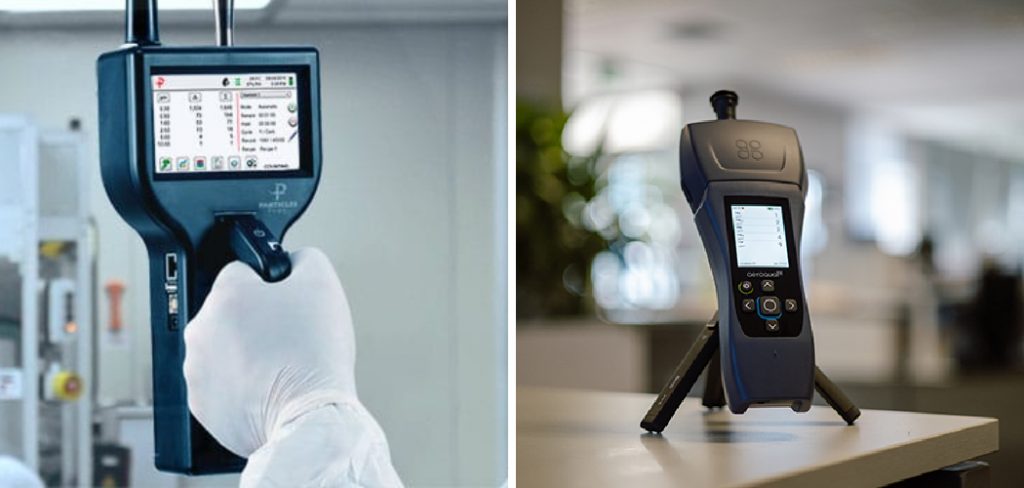
This document will explore various methods and tools employed to measure dust concentration in the atmosphere, providing a comprehensive guide on how to measure dust in the air for researchers, environmentalists, and policy-makers. Understanding the techniques used for dust measurement is crucial in tackling air pollution and promoting a healthier living environment.
Benefits of Measuring Dust in the Air
Dust particles, also known as particulate matter (PM), are tiny solid or liquid substances present in the air. These particles can come from natural sources such as windblown dust and wildfires, or human activities like industrial processes and transportation emissions.
Exposure to high levels of PM can have adverse effects on human health, ranging from respiratory problems to cardiovascular diseases. Therefore, measuring dust concentration in the air not only helps us to understand the extent of pollution but also enables us to take necessary actions to protect public health.
In addition to its impact on human health, measuring dust in the air is essential for environmental monitoring and research. Dust particles can affect climate patterns, soil fertility, and ecosystem health, making it crucial to study their behavior and distribution in the atmosphere.
Needed Materials
To measure dust in the air, you will need a few essential materials and equipment:
Dust Sampler:
This device collects air samples and captures dust particles for analysis. There are different types of dust samplers, such as high-volume samplers, low-volume samplers, and personal samplers. Each type has its own advantages and is suitable for specific applications.
Filters:
Filters are used in conjunction with dust samplers to capture and retain particles from the air samples. These filters can be made of different materials, such as glass fiber or Teflon membrane, depending on the size and type of particles being measured.
Analytical Instruments:
Once the air samples are collected, they need to be analyzed using specialized instruments to determine the concentration of dust particles present. The most commonly used instruments for this purpose are optical particle counters, gravimetric analyzers, and mass spectrometers.
Calibration Equipment:
To ensure accurate measurements, it is crucial to calibrate the dust sampler and analytical instruments regularly. This involves comparing them to a standard reference source and making necessary adjustments.
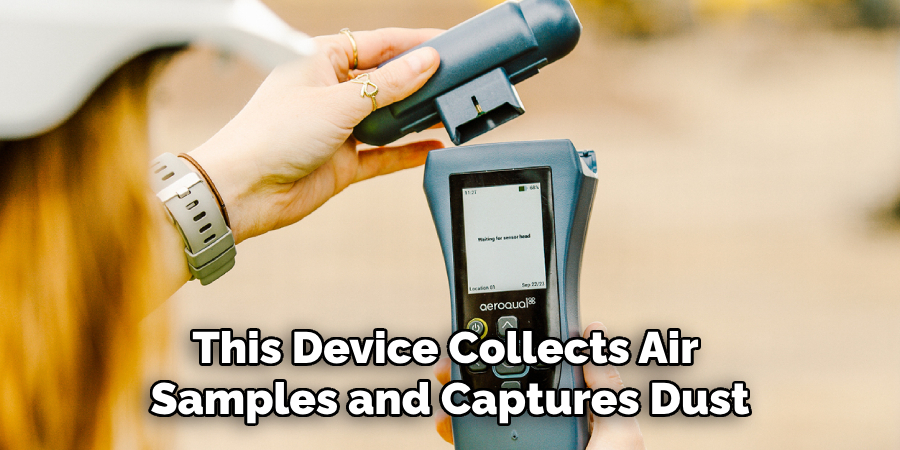
7 Methods on How to Measure Dust in the Air
Method 1: High-Volume Sampling
High-volume sampling is a widely used method for measuring dust concentration in the air. This technique employs a high-volume air sampler that draws in large volumes of air over a specific period, typically 24 hours. The high flow rate allows for the collection of significant amounts of particulate matter, which is then deposited onto a filter.
The process begins by setting up the high-volume sampler in the desired location. It is crucial to place the sampler in an open area free from obstructions to avoid any interference. Once the sampler is turned on, air is drawn through an inlet and passed through a pre-weighed filter. Dust particles in the air are trapped on the filter while the filtered air is discharged back into the atmosphere. After the sampling period, the filter is reweighed to determine the amount of dust collected and calculate the concentration in micrograms per cubic meter.
High-volume sampling is suitable for long-term monitoring and can provide a representative measurement of dust levels in a particular area. However, this method requires a considerable investment in equipment and resources, making it more suitable for research purposes rather than routine monitoring.
Method 2: Low-Volume Sampling
Similar to high-volume sampling, low-volume sampling also relies on air samplers to collect dust particles on filters. The main difference lies in the lower flow rate used in this method, which typically ranges from 10 to 30 liters per minute. This makes low-volume sampling more suitable for short-term monitoring or spot checks.
Low-volume sampling is less expensive and requires less equipment compared to high-volume sampling, making it a more practical option for routine air quality measurements. However, the lower flow rate may result in underestimation of dust concentrations during periods of higher pollution levels.
Method 3: Personal Sampling
Personal sampling involves wearing a small portable sampler that collects air samples directly from an individual’s breathing zone. This method is commonly used in occupational settings where workers are exposed to dust particles, such as construction sites and mines.
The personal sampler is attached to the worker’s clothing or placed in their breathing zone, and it collects air for a specified period. After sampling, the filter is analyzed to determine the concentration of dust particles that the individual was exposed to during that time.
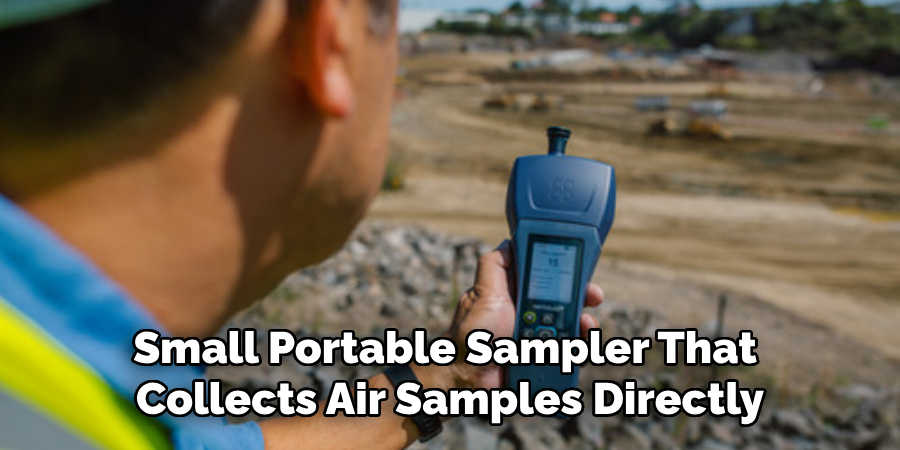
Personal sampling provides a more accurate representation of an individual’s exposure to dust, as it takes into account factors such as body movements and proximity to emission sources. However, it is not suitable for long-term monitoring and may be affected by variations in wind direction and speed.
Method 4: Optical Particle Counting
Optical particle counters (OPCs) use light scattering technology to count and size particles in the air. These instruments can provide real-time measurements of dust concentrations, making them suitable for continuous monitoring.
OPCs work by drawing in a sample of air and passing it through a laser beam. As particles pass through the beam, they scatter light, which is then detected and analyzed by the instrument. The number and size of particles are determined based on the intensity of scattered light.
OPCs are useful for measuring both indoor and outdoor dust levels, but they may not be as accurate as other methods when it comes to differentiating between types of particles or detecting smaller particles.
Method 5: Gravimetric Analysis
Gravimetric analysis is a widely used method for quantifying the mass of airborne particles collected on filters. This technique involves weighing the filter before and after sampling to determine the increase in weight caused by dust particles.
After sampling, the filter is dried and weighed using a high-precision analytical balance. The difference in weight between the pre-sampling and post-sampling measurements represents the amount of dust collected. This value can then be converted into a concentration measurement based on the volume of air sampled. Gravimetric analysis is accurate and suitable for measuring all types of particles, including those that cannot be detected by optical particle counters.
Method 6: Mass Spectrometry
Mass spectrometry is a highly sensitive analytical technique that can identify and quantify individual particles in the air. This method involves ionizing dust particles and separating them based on their mass-to-charge ratio.
After sampling, the collected particles are vaporized and ionized using an electron beam. The resulting ions are then separated and detected, providing information on the type and size of particles present. Mass spectrometry can also determine the chemical composition of particles, making it a valuable tool for identifying specific sources of dust.
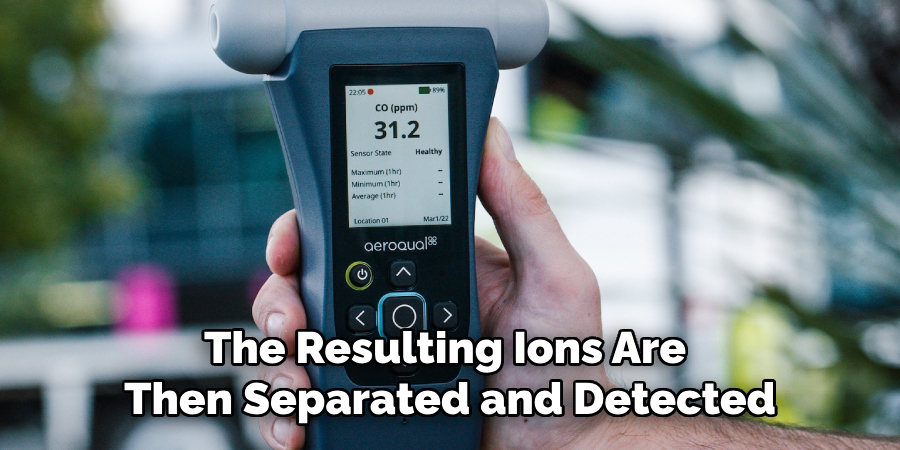
Method 7: Remote Sensing
Remote sensing involves using instruments such as lidars or radars to measure dust levels in the air from a distance. These instruments use beams of light or radio waves to detect and track dust particles in the atmosphere.
Lidars (Light Detection and Ranging) work by emitting pulses of laser light into the air and measuring the time it takes for the light to reflect off particles and return to the instrument. This information is used to estimate particle size and concentration. Radars (Radio Detection and Ranging) use radio waves to detect and measure dust particles, making them useful for monitoring large areas.
Remote sensing is non-invasive and can provide real-time measurements of dust levels over a wide area. However, it may not be as accurate as other methods when it comes to quantifying the mass or chemical composition of particles.
Frequently Asked Questions
Q: What is the Most Suitable Method for Long-term Monitoring of Dust Levels?
A: High-volume sampling is the most suitable method for long-term monitoring, as it provides a representative measurement of dust levels over an extended period of time. However, it may not be feasible for routine monitoring due to its high cost and resource requirements.
Q: How Accurate are Optical Particle Counters in Measuring Dust Concentrations?
A: Optical particle counters can provide real-time measurements of dust concentrations but may not be as accurate when it comes to differentiating between types of particles or detecting smaller particles. They are most suitable for general monitoring rather than precise measurements.
Q: Can Personal Sampling be Used for Routine Air Quality Monitoring?
A: Personal sampling is not typically used for routine air quality monitoring, as it is more suited for short-term or spot checks. It may also be affected by factors such as wind direction and speed. However, it can provide a more accurate representation of an individual’s exposure to dust in occupational settings. Therefore, it may be used for specific purposes where precise measurements are needed.
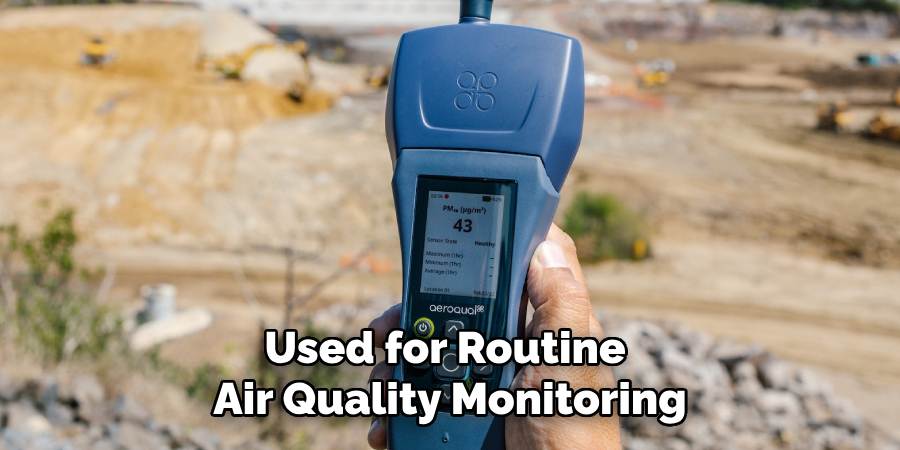
With these various methods on how to measure dust in the air, it is important to carefully select the most suitable technique for the specific needs and objectives of each monitoring situation. Factors such as cost, resources, and desired accuracy should be taken into consideration when choosing a method.
Conclusion
In conclusion, there are various methods available for measuring dust levels in the air, each with its advantages and limitations. The choice of method will depend on factors such as the purpose of measurement, budget, and resources available. It is essential to carefully consider these factors when selecting the most suitable method for a particular situation.
Continuous monitoring using multiple methods on how to measure dust in the air may also provide a more comprehensive understanding of dust levels and their potential impacts on human health and the environment. So, it is important to evaluate the different methods and choose the most appropriate one based on specific needs. By carefully measuring and monitoring dust levels, we can better understand and address air pollution issues related to dust particles.
About
Safety Fic is a distinguished figure in the world of Diy design, with a decade of expertise creating innovative and sustainable Diy solutions. His professional focus lies in merging traditional craftsmanship with modern manufacturing techniques, fostering designs that are both practical and environmentally conscious. As the author of diy, Safety Fic delves into the art and science of Safety Fic-making, inspiring artisans and industry professionals alike.
Education RMIT University
(Melbourne, Australia) Associate Degree in Design (Safety Fic) Focus on sustainable design, industry-driven projects, and practical craftsmanship. Gained hands-on experience with traditional and digital manufacturing tools, such as CAD and CNC software.
Nottingham Trent University
(United Kingdom) Bachelor’s in diyfastly.com and Product Design (Honors) Specialized in product design with a focus on blending creativity with production techniques. Participated in industry projects, working with companies like John Lewis and Vitsoe to gain real-world insights.
Publications and Impact
In diy, Safety Fic his insights on indoor design processes, materials, and strategies for efficient production. His writing bridges the gap between artisan knowledge and modern industry needs, making it a must-read for both budding designers and seasoned professionals.
